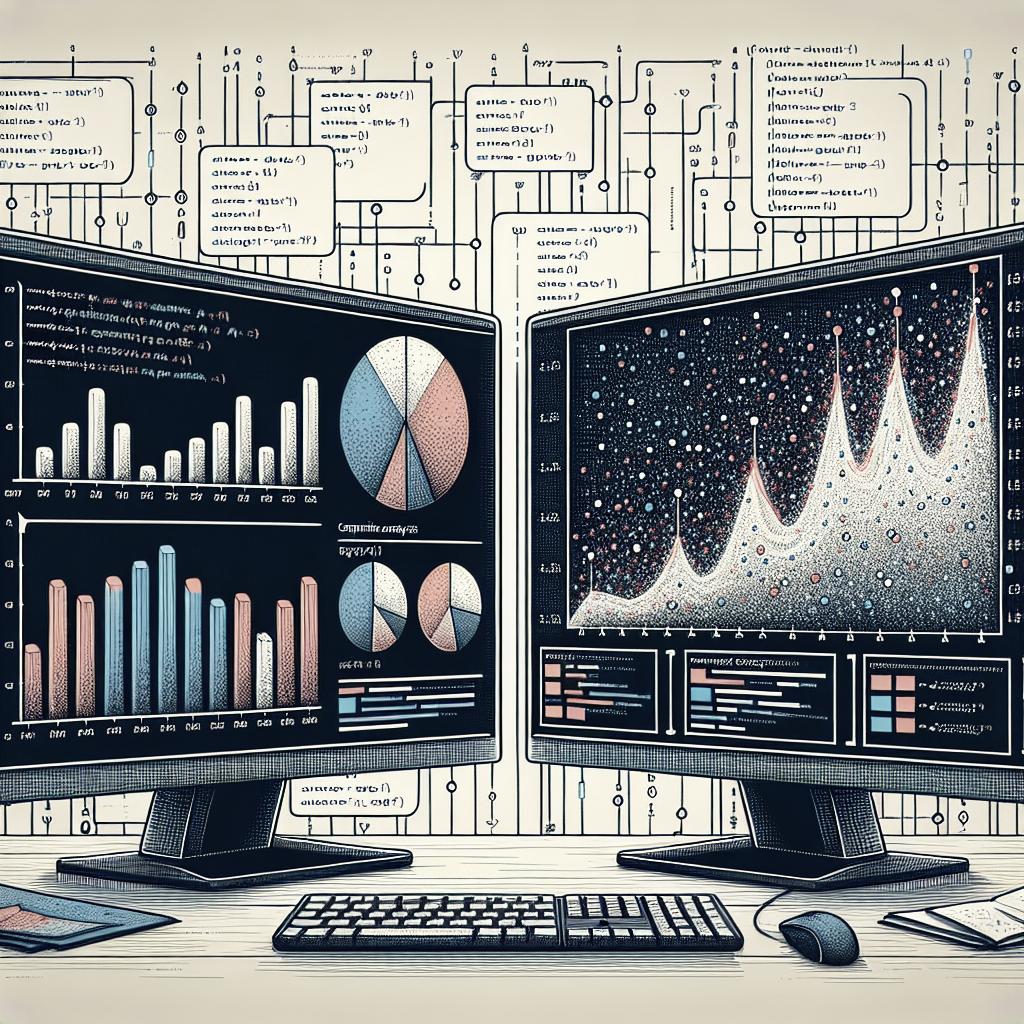Recommended for you
If you’re diving into the world of data visualization with R, understanding how to effectively use
ggplot2
is a must. This powerful package offers a plethora of tools to help you create complex yet beautiful visual representations of data. Among these,
faceting
plays a crucial role when it comes to comparing subsets of data. In this blog post, we’ll explore various faceting techniques in ggplot2, including
facet_grid
,
facet_wrap
, and methods to modify facet label appearance and text. We’ll also delve into free scales for even greater flexibility. Whether you’re a data scientist or a curious enthusiast, these techniques will enable you to create insightful visualizations with ease.
Beyond merely visualizing data, mastering faceting in ggplot2 allows you to effectively communicate complex findings and insights. Learning how to customize facets gives you the power to tailor visual narratives specifically to your audience, a skill highly sought after in our data-driven world. In this blog post, we’ll not only break down the mechanics of each technique but also bolster your skill set with practical examples.
Recommended for You!
Faceting in ggplot2 is highly recommended for anyone interested in understanding how different variables within a dataset interact with one another. The ability to lay out data through multiple panels enables you to spot patterns and outliers seamlessly. If you’re working on projects that require detailed visual comparisons, using facets is a no-brainer.
Whether creating dashboards for a business, conducting academic research, or just delving into personal data exploration, mastering faceting techniques in ggplot2 is an invaluable tool. With the right knowledge, you can leverage ggplot2 to make your visualizations not only informative but also aesthetically pleasing, thereby enhancing communication with your audience.
Problem
When dealing with large datasets that include multiple variables, creating a single plot often becomes cumbersome and ineffective for conveying insights. Visual clutter can obscure vital information and make it difficult for your audience to grasp the underlying patterns within your data.
Additionally, simplistic plots run the risk of overlooking intricate relationships between variables. Plotting everything on one graph may hide discrepancies or patterns that could prove critical to your analysis. The challenge lies in presenting a comprehensive view without overwhelming the viewer.
Solution
ggplot2 provides a structured and intuitive approach to tackle this problem through faceting. By dividing your plot into a matrix of panels, you can present multiple views of your data simultaneously, revealing insights that would be difficult to discern otherwise.
Techniques such as
facet_grid
and
facet_wrap
allow you to facet by one or more factors, distributing your data in a manner that’s both methodically and visually appealing. Coupled with customization options like modifying labels and applying free scales, ggplot2’s faceting innovations offer thorough solutions to modern data visualization challenges.
Books – Data Science
Before diving into faceting techniques, it’s prudent to build a solid foundation with supplementary resources. Comprehensive books can provide nuanced understanding and advanced techniques, critical for mastering ggplot2 and its plethora of capabilities.
Titles like “R for Data Science” by Hadley Wickham and Garrett Grolemund, and “ggplot2: Elegant Graphics for Data Analysis” by Hadley Wickham himself are highly recommended for anyone serious about data visualization using R. These resources give you both practical knowledge and theoretical grounding, enabling you to maximize the potential of faceting within ggplot2.
Sample data
For illustration, consider the
mtcars
dataset available in R. This dataset includes data extracted from the 1974 Motor Trend US magazine and comprises fuel consumption and ten characteristics of automobile design and performance for 32 automobiles (1973–74 models).
We’ll use this dataset to demonstrate various faceting techniques. With variables like
mpg
(miles per gallon),
cyl
(number of cylinders), and
gear
(number of forward gears), the
mtcars
dataset serves as an ideal candidate for showcasing how faceting can illuminate relationships between different variables.
facet_grid
The
facet_grid()
function in ggplot2 is used to create a grid of plots based on two factors. These factors could be some categorical variables in your dataset. The syntax typically follows
facet_grid(rows ~ columns)
, providing a structured layout.
For example, consider using
facet_grid(cyl ~ gear)
with the
mtcars
dataset. This command will create a matrix of plots with rows separated by number of cylinders and columns distinguished by the number of gears. It offers an organized way of viewing variances and interrelations among these categorical distinctions.
facet_wrap
Unlike
facet_grid()
, which creates a 2D matrix,
facet_wrap()
“wraps” a single variable into multiple panels. This approach is particularly useful when you’re dealing with a single categorical variable with many levels.
If we use
facet_wrap(~ cyl)
on the mtcars dataset, each facet represents data from different cylinder counts. This technique can easily be applied in scenarios with numerous categories where a grid would either be too sparse or heavily cluttered.
Modifying facet label appearance
Facet labels can be customized in a variety of ways to enhance the aesthetics and readability of your plot. This can include altering font size, style, or color. ggplot2 allows such modifications through the use of theme functions like
theme()
.
You can utilize theme settings such as
strip.text.x = element_text(size = 12, face = "bold")
to adjust the appearance of facet labels. This customization makes your data visualization not only more legible but also capable of aligning with your branding and publication needs.
Modifying facet label text
In addition to modifying appearance, you may need to adjust the facet text itself. This could mean changing labels to be more descriptive or proper, handling cases where your variable names aren’t immediately intuitive.
One can use the
labeller
function to replace facet labels effectively. For instance, applying
labeller = label_both
will display both the variable name and its corresponding level in the facet label, thus providing greater context to viewers.
Free scales
Implementing free scales in faceting allows each facet to have its Y or X axis, removing restrictions of a collective scale. This could prove extremely valuable when individual panels would otherwise misrepresent data trends due to scale compression.
Utilizing free scales is straightforward with options like
facets = vars(Y), scales = "free_y"
within your ggplot call. Free scales ensure that each panel accurately reflects the variance within its own data subset, providing a more nuanced view.
Future Prospects
| Technique | Description |
|---|---|
| facet_grid | Utilizes a row and column matrix to display data facets, ideal for comparing two categorical variables. |
| facet_wrap | Wraps a single variable or factor into multiple panels for display, useful for many levels of a single categorical variable. |
| Modifying facet label appearance | Allows changes to font size, style, and color to improve readability and aesthetics. |
| Modifying facet label text | Adjusts facet label text to be more informative and descriptive with labeller functions. |
| Free scales | Provides each facet individual axis scales, leading to a more accurate data representation. |
As data visualization continues to evolve, these essential faceting techniques in ggplot2 remain critical for making informed, meaningful visualizations. Understanding how to implement, modify, and tailor these features provides a holistic set of tools to better communicate your data’s story. Whether you’re enhancing a report, building a dashboard, or just exploring data, mastering these options can significantly enhance our capacity to create more insightful and impactful graphical outputs.


